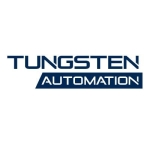What is our primary use case?
I work with clients who are in banking, the financial sector, and the accounting sector. It mostly involves work with Excel, SAP, and BI. A typical use case starts with downloading data from SAP, manipulating it in Excel, sending relevant emails, and then receiving the responses.
How has it helped my organization?
This solution has helped us bring in more clients. We are able to satisfy our clients in ways that we did not think was possible. When we started interacting with our clients, the expectations were pretty low. We were hoping to automate ten processes. Now, with the capability provided by Automation Anywhere and our coding knowledge, we have put everything together and have automated approximately one hundred processes. So, the clients who expected ten and ultimately were given one hundred were pretty happy. The company image has been boosted, as well as the trust and confidence in this solution.
What is most valuable?
One of the strongest aspects of Automation Anywhere is the ability to have custom MetaBots through images, or through the use of DLLs or APIs. This functionality was introduced in version ten.
This solution is easy to use and easy to learn compared to Blue Prism, UiPath, and others. You don't need to know C# or any other programming language. It is helpful because you can build DLLs, but if you don't then you can still manage. You can use Automation Anywhere from a non-coding background. If somebody is not familiar with RPA then they can still swoop in and get experience by doing automation projects.
They have a good community online with a lot of documentation and videos available.
What needs improvement?
I would like to see this solution made to be a little more robust. As a coder, I have written more than one hundred functions and I can do high-level testing, but I can't do the low-level testing of complicated use cases. I think that AA has to look at it from that perspective. Hire a few developers, give them some complex work or use cases, let them work on it, and then check for stability when there are two or three tasks. For example, one task runs, the output goes into another task, one window opens, then another window opens, and you interact with multiple interfaces. This type of testing may be how they'll get to know what is wrong with the application.
I would like to see more Excel functions built-in. Currently, they have forty-five or forty-eight functions supported, but I have written a DLL that includes one-hundred functions. They can do many more than forty-eight, and because we are dealing with accounting and finance, Excel is used a lot. We need Excel and we don't want to always have to depend on a custom-built DLL. When using a DLL, ninety percent of the time it won't be uniform for all of the processes. This means that I have to modify it, rebuild the DLL, and deploy it again. Native support would be much better.
Web automation capability needs to be improved.
I would like to see more features in the next release of this solution, including data tables, spying, and cloning.
IQ Bot is bad and needs a lot of tweaking. It needs to have thrust because right now you use it and it doesn't get off the ground. It just stays there. They made us believe that there is potential, so they have to fulfill it. For example, they speak about this ML component in IQ Bot, but I know that it doesn't exist. There is no ML component there, and I would like to see one kick in when IQ Bot fails to extract data. It should start automatically, and maybe ask us for some guidance at the beginning on how to do the work. With the ML component working, IQ Bot would be very good.
Buyer's Guide
Automation Anywhere
April 2025
Learn what your peers think about Automation Anywhere. Get advice and tips from experienced pros sharing their opinions. Updated: April 2025.
849,190 professionals have used our research since 2012.
What do I think about the stability of the solution?
I would rate the stability of this solution somewhere around an eight out of ten. Although it seems to be very stable, perhaps ninety-nine percent of the time, when you need it the most, it stops working. Object cloning, for example, even when you go through DOMXPath, and even if you map the exact path by going through the Object ID, the DOM, you collect the DOM and then you map the exact object, it hangs sometimes.
What do I think about the scalability of the solution?
Scalability is very good, except in the case of IQ Bot.
IQ Bot has problems with respect to scalability. As an example, consider that you want to upload one thousand POs per day. You have two machines, and you want to split the work, but there is a problem. IQ Bot is going to put the output into the same output path, but how do you know which machine has generated this output? How do you map it? This is an inherent flaw that hinders scalability in the long run. IQ Bot doesn't even let you know whether an output has been generated. They have a database, and I built a custom bot to look at their database to find out if the output has been generated, or not. However, people have told me not to touch this database because it is proprietary.
The other point with regards to scalability is that it doesn't just happen out of the box. You do not just add a hundred more machines and have it work in the same manner. You need to use it in tandem with an SQL database, or another application like Tableau. If you do then it will be very strong and very robust. It will be loosely coupled but highly scalable.
How are customer service and support?
I have corresponded with them and I would rate technical support a nine out of ten. I do not want to be too hard on them but what I've noticed is that they will support people, but may not fully understand the technical aspects of the components that they're using in Automation Anywhere. So, if you were to ask them, "How do I get to the Moon?", they would answer, "Just build a rocket". They won't tell me how to build the rocket. If they would connect developers to their own backend engineers then that would be really helpful.
How was the initial setup?
The initial setup of this solution is a little bit complex, but if from the start you know where to go, what to click, and exactly what each button does then it will be very useful. If you have somebody to guide you then it will be much easier.
What about the implementation team?
We implemented this solution ourselves. We developed the Bots like we always do. We uploaded it to a repository and moved it to a production environment that we set up. We then synchronized all of the files that are required to be present in the production environment. Finally, we provided support for a week after the deployment.
What was our ROI?
We have saved a lot of time and replaced a few FPEs with this solution. It is a one-time investment for a year. You may replace people or alternatively put them elsewhere to work on better activities. This solution saves money for our clients, which is a good thing.
What other advice do I have?
I have seen my colleagues use UiPath and web automation is excellent. I have been involved in hackathons where I have used Automation Anywhere for web automation, and I have struggled. In web automation, if UiPath completes it in ten seconds, then Automation Anywhere will take seventy to eighty seconds for the same task.
I would rate this solution a seven out of ten.
Disclosure: My company has a business relationship with this vendor other than being a customer: Partner.


















